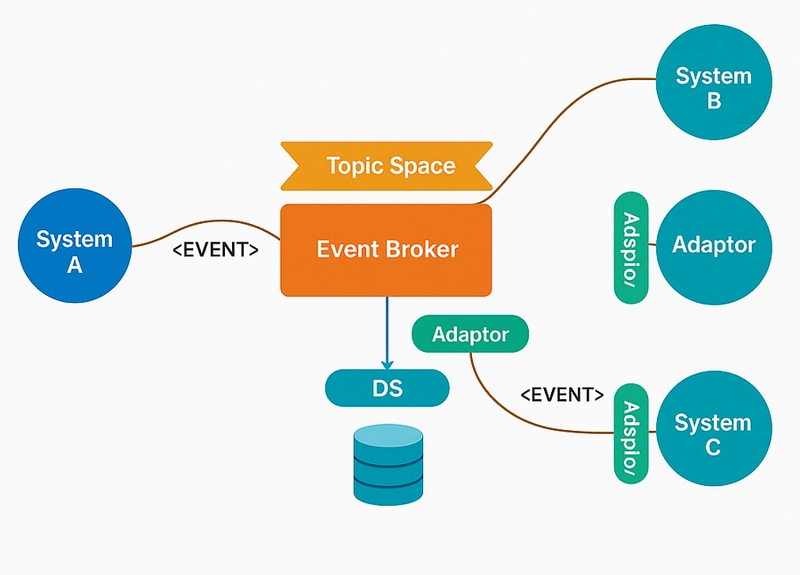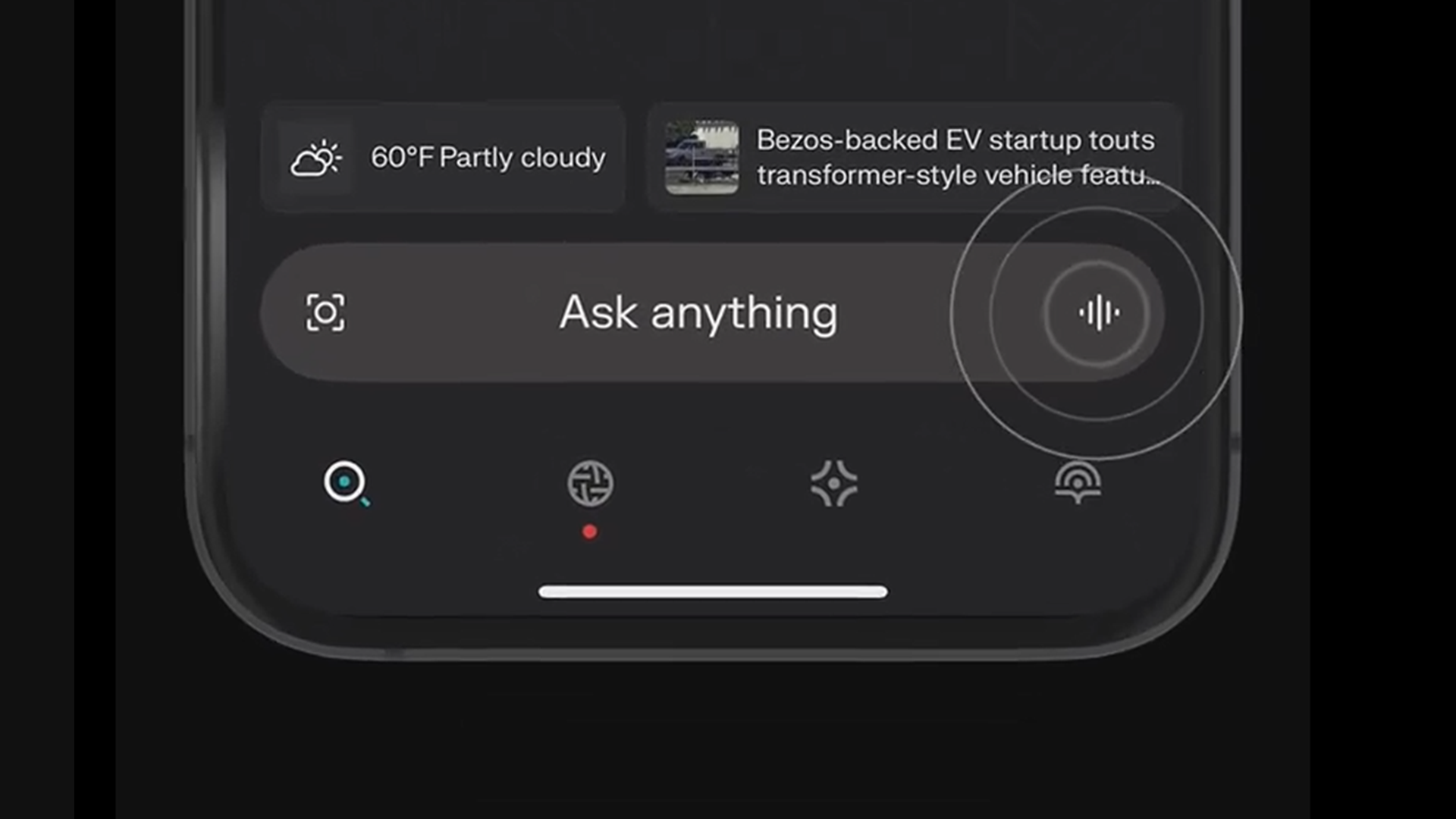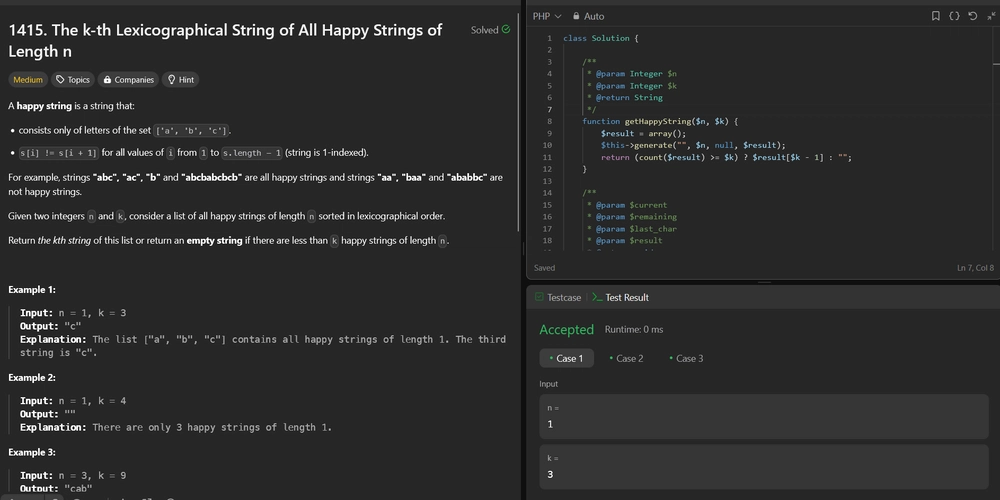Why T-SQL’s Most Misunderstood Keyword Is Actually It's Safest
When T-SQL Control Flow Silently Fails Ever debugged a T-SQL batch where: CONTINUE skipped your loop increment — and you hit an infinite loop? TRY/CATCH swallowed a failure — and the error vanished without a trace? A CASE statement updated rows... and quietly set half of them to NULL? If so, you're not alone — and you're not crazy. T-SQL looks structured, but it isn't. It has blocks, but no scopes. It has flow keywords, but no control model. It compiles code that fails silently. And it rewards syntax that hides behavior. That’s why GOTO, used deliberately, isn’t a throwback — it’s the only reliable way to name, route, and trace control flow in procedural T-SQL. GOTO as a First-Class Control Tool in T-SQL When you must write procedural logic in T-SQL, GOTO is often the safest and most maintainable control tool — and should be taught early to those writing non-trivial row-wise logic. In most programming environments, GOTO is rightly treated with caution — even skepticism. But T-SQL is a different animal. Its procedural model isn’t fully structured, and the control constructs it provides are shallow at best. In this environment, where flow control is flat and error paths are invisible by default, GOTO can offer something rare: clarity. Over years of building and debugging real-world T-SQL logic — from row processors to audit paths to conditional logging — I’ve come to rely on GOTO not as a fallback, but as a deliberate control structure. It’s not a relic here. It’s infrastructure. T-SQL is simply one dialect of SQL, For other flavors of SQL these procedural operations are either handled more like a 'standard' programming language; for others, the best practice is to keep procedural code within the application layer (more on this later). T-SQL Is Not a Structured Language T-SQL is not like C# or Python. Once you enter procedural logic in T-SQL—inside a WHILE loop, a cursor, or a row processor—you’re no longer writing in a declarative model. You're writing imperative logic in a language without strong scoping, block validation, or flow constructs beyond basic IF/WHILE/BEGIN. The assumption that WHILE and CONTINUE or nested IFs provide “structure” is misleading in practice. These are syntactic constructs, not control mechanisms. Why People Say GOTO Is Dangerous — and Why That Doesn’t Apply to T-SQL In most general-purpose languages, GOTO is discouraged because it bypasses structured constructs like loops, blocks, or exception handling. It can skip initialization code, violate scope boundaries, or create control paths that are hard to reason about — particularly in deeply nested or object-oriented environments. But none of those constraints apply in T-SQL. T-SQL has: No lexical block scope No function-local variable lifetimes No structured loop constructs with enforced entry/exit No inline functions or closures that require controlled call stack behavior Because of this, GOTO isn’t subverting anything — it’s operating at the same level as every other control construct. There's no hidden context to jump over. You’re writing top-to-bottom procedural logic in a flat execution model. IF @val = 1 GOTO SkipProcessing -- initialization here -- main work SkipProcessing: -- resume or exit Here, you’re not bypassing scope or leaving resources uncleaned — you’re making a deliberate control choice in a flat environment. In this setting, GOTO doesn't undermine the language — it completes it. First Principles Over Abstractions “I fear not the man who has practiced 10,000 kicks once, but I fear the man who has practiced one kick 10,000 times.” — Bruce Lee In procedural T-SQL, the safest path is often the one that’s the clearest, not the most abstract. Too often, developers reach for BEGIN, WHILE, or TRY/CATCH out of habit — not because they fit the problem, but because they mimic structured programming syntax from other languages. But T-SQL isn’t structured. It’s flat. And the more you rely on appearance over function, the more likely you are to ship logic that looks correct but silently fails. GOTO, by contrast, doesn’t pretend. It exposes your logic. It handles: Conditional skips (continue) Early exits (break) Error routing (goto error handler) Re-entry and retry logic Controlled fallbacks and dispatch jumps All of this — without nesting traps, without state flags, and without mutating shared variables across scopes. IF @rowInvalid = 1 GOTO SkipRow IF @fatalError = 1 GOTO TerminateProcess In two lines, you can express logic that would take a full block structure, plus careful variable handling, to reproduce with WHILE or TRY/CATCH. And because it fails loudly (missing label = runtime error), you’re not guessing what happened. One construct. Ten thousand clean uses. That’s not a fallback — it’s a foundation. Control Flow Should Follow First Principles, Not Syntax Mimicry When designing logic in any langu

When T-SQL Control Flow Silently Fails
Ever debugged a T-SQL batch where:
-
CONTINUEskipped your loop increment — and you hit an infinite loop? -
TRY/CATCHswallowed a failure — and the error vanished without a trace? - A
CASEstatement updated rows... and quietly set half of them toNULL?
If so, you're not alone — and you're not crazy.
T-SQL looks structured, but it isn't. It has blocks, but no scopes. It has flow keywords, but no control model. It compiles code that fails silently. And it rewards syntax that hides behavior.
That’s why GOTO, used deliberately, isn’t a throwback — it’s the only reliable way to name, route, and trace control flow in procedural T-SQL.
GOTO as a First-Class Control Tool in T-SQL
When you must write procedural logic in T-SQL, GOTO is often the safest and most maintainable control tool — and should be taught early to those writing non-trivial row-wise logic.
In most programming environments, GOTO is rightly treated with caution — even skepticism. But T-SQL is a different animal. Its procedural model isn’t fully structured, and the control constructs it provides are shallow at best. In this environment, where flow control is flat and error paths are invisible by default, GOTO can offer something rare: clarity.
Over years of building and debugging real-world T-SQL logic — from row processors to audit paths to conditional logging — I’ve come to rely on GOTO not as a fallback, but as a deliberate control structure. It’s not a relic here. It’s infrastructure.
T-SQL is simply one dialect of SQL, For other flavors of SQL these procedural operations are either handled more like a 'standard' programming language; for others, the best practice is to keep procedural code within the application layer (more on this later).
T-SQL Is Not a Structured Language
T-SQL is not like C# or Python. Once you enter procedural logic in T-SQL—inside a WHILE loop, a cursor, or a row processor—you’re no longer writing in a declarative model. You're writing imperative logic in a language without strong scoping, block validation, or flow constructs beyond basic IF/WHILE/BEGIN.
The assumption that WHILE and CONTINUE or nested IFs provide “structure” is misleading in practice. These are syntactic constructs, not control mechanisms.
Why People Say GOTO Is Dangerous — and Why That Doesn’t Apply to T-SQL
In most general-purpose languages, GOTO is discouraged because it bypasses structured constructs like loops, blocks, or exception handling. It can skip initialization code, violate scope boundaries, or create control paths that are hard to reason about — particularly in deeply nested or object-oriented environments.
But none of those constraints apply in T-SQL.
T-SQL has:
- No lexical block scope
- No function-local variable lifetimes
- No structured loop constructs with enforced entry/exit
- No inline functions or closures that require controlled call stack behavior
Because of this, GOTO isn’t subverting anything — it’s operating at the same level as every other control construct. There's no hidden context to jump over. You’re writing top-to-bottom procedural logic in a flat execution model.
IF @val = 1 GOTO SkipProcessing
-- initialization here
-- main work
SkipProcessing:
-- resume or exit
Here, you’re not bypassing scope or leaving resources uncleaned — you’re making a deliberate control choice in a flat environment. In this setting, GOTO doesn't undermine the language — it completes it.
First Principles Over Abstractions
“I fear not the man who has practiced 10,000 kicks once, but I fear the man who has practiced one kick 10,000 times.”
— Bruce Lee
In procedural T-SQL, the safest path is often the one that’s the clearest, not the most abstract. Too often, developers reach for BEGIN, WHILE, or TRY/CATCH out of habit — not because they fit the problem, but because they mimic structured programming syntax from other languages.
But T-SQL isn’t structured. It’s flat. And the more you rely on appearance over function, the more likely you are to ship logic that looks correct but silently fails.
GOTO, by contrast, doesn’t pretend. It exposes your logic. It handles:
- Conditional skips (
continue) - Early exits (
break) - Error routing (
goto error handler) - Re-entry and retry logic
- Controlled fallbacks and dispatch jumps
All of this — without nesting traps, without state flags, and without mutating shared variables across scopes.
IF @rowInvalid = 1 GOTO SkipRow
IF @fatalError = 1 GOTO TerminateProcess
In two lines, you can express logic that would take a full block structure, plus careful variable handling, to reproduce with WHILE or TRY/CATCH. And because it fails loudly (missing label = runtime error), you’re not guessing what happened.
One construct.
Ten thousand clean uses.
That’s not a fallback — it’s a foundation.
Control Flow Should Follow First Principles, Not Syntax Mimicry
When designing logic in any language, especially T-SQL-based systems, it's tempting to default to syntactic structures like WHILE, IF, or BEGIN simply because they look familiar. But syntax is not structure. The presence of BEGIN blocks or indented IF trees does not imply correctness, traceability, or safety.
A better starting point is to ask: What is the actual control behavior I need?
- Do I need to conditionally skip processing?
- Do I need a named exit or early return?
- Do I need to retry, or redirect logic based on state?
These are control flow primitives — and T-SQL does not expose them directly. GOTO allows you to build them explicitly.
Compare these two styles:
-- Structured by syntax
IF @val = 2
BEGIN
SET @i += 1
CONTINUE
END
-- Structured by behavior
IF @val = 2 GOTO SkipRow
...
SkipRow:
SET @i += 1
GOTO StartLoop
Only the second makes the skip behavior named, visible, and testable. Syntax gives you form. First principles give you function. In T-SQL, always choose the latter.
GOTO Makes Flow Explicit
Consider a typical WHILE loop with CONTINUE, BREAK, & RETURN:
DECLARE @i INT = 1
DECLARE @val INT
DECLARE @max INT = (SELECT COUNT(*) FROM @WorkTable)
WHILE @i <= @max
BEGIN
SELECT @val = Value FROM @WorkTable WHERE RowNum = @i
IF @val IS NULL
BREAK
IF @val = 2
BEGIN
SET @i += 1
CONTINUE
END
IF @val = 99
BEGIN
-- Audit + bail
RETURN
END
-- Main logic
SET @i += 1
END
While this is readable in isolation, it becomes increasingly difficult to trace flow as complexity increases. Conditional logic is buried in nested blocks, and the sequence of actions becomes harder to follow. Maintenance suffers as developers must scan deeply to understand the logic tree.
The logic starts simple but becomes hard to trace quickly. There’s:
- A risk of @i not incrementing on every branch
- Hidden side effects in deeply nested conditions
- Confusion around early exit (
BREAK,RETURN, or silent skip?)
Even with CONTINUE, you often still need to manually adjust the loop index to avoid skipping or infinite loops — and RETURN is an all-or-nothing exit, with no local recovery or audit branch.
Now compare that to the same logic expressed with GOTO and labels:
StartLoop:
IF @val IS NULL GOTO EndLoop
IF @val = 2 GOTO SkipRow
IF @val = 5 GOTO LogAndExit
-- Work logic
SET @i += 1
GOTO StartLoop
SkipRow:
SET @i += 1
GOTO StartLoop
LogAndExit:
INSERT INTO LogTable ...
GOTO EndLoop
EndLoop:
PRINT 'Done'
Here, every flow decision is visible at the top. Each path is labeled clearly. The branching logic is centralized, and there's no need to infer structure from indentation or nesting. This makes it easier to audit, easier to test, and less prone to silent failure.
Set-Based Logic Isn’t Safer — It’s Just Quieter
Set-based logic (CASE, WHERE, MERGE) is often treated as the “safe” or “pure” option in T-SQL — but that’s a misunderstanding of its role. These constructs are great for transformations, but they're not control flow tools. And when misapplied to simulate logic, they introduce some of the most dangerous failure modes in SQL: silent data mutation.
UPDATE Orders
SET Status = CASE
WHEN Paid = 1 THEN 'Processed'
WHEN Paid = 0 THEN 'Failed'
-- forgot ELSE clause
END
This compiles. It runs. It even looks fine in a code review — and it leaves all other rows with Status = NULL. No error. No warning. No audit trail.
Set logic is declarative — it says what to change, but gives you no control over when or why. It can't:
- Skip based on runtime conditions
- Log or audit per-row
- Short-circuit a loop
- Retry on failure
- Selectively suppress output
With GOTO, each branch is named, jumpable, traceable. You know what rows you’re skipping, when you're logging, and where you’re exiting. There’s no guesswork and no silent state corruption. That’s not just safer — it’s operationally trustworthy.
GOTO Safety Through Loud Failures
One of the strongest operational arguments for structured GOTO usage in T-SQL is that it fails loudly. In contrast to nested IF blocks, WHILE loops, or CASE expressions that can silently skip execution or leave values unset, GOTO breaks visibly and immediately when misused.
For example, a mistyped label:
IF @val = 3 GOTO ProccessRow -- typo
...will fail at runtime with a clear error. There's no silent fallthrough. You know it. You fix it. It’s done.
Similarly, jumping to a missing or misaligned logic segment results in a batch error, not a silent bug. That visibility makes GOTO safer than constructs that compile and execute without doing what you think they do.
Compare that to this CASE statement:
UPDATE Orders
SET Status = CASE
WHEN Paid = 1 THEN 'Processed'
WHEN Paid = 0 THEN 'Failed'
-- missing ELSE
END
This will run without error and leave Status as NULL for unexpected input — silently. If your data logic is wrong, it will succeed incorrectly.
With GOTO, correctness is never implicit. If the path doesn’t exist, the script stops — and that’s exactly the kind of safety production systems need.
The Real Risk of GOTO: Spaghetti Flow and Scope Violations — and How to Avoid Them
The common argument against GOTO in any language is that it enables “spaghetti code” — tangled, nonlinear control flow that’s hard to follow and prone to subtle bugs. This is especially true when labels and jumps are used arbitrarily, across unrelated logic or setup blocks.
In T-SQL, a typical misuse might look like this:
-- Dangerous GOTO pattern
IF @skip = 1 GOTO DoWork
SET @val = 'important value'
DoWork:
-- Uses @val, which might not be set
INSERT INTO Logs (Message) VALUES (@val)
Here, GOTO bypasses initialization. The result? A silent bug with a NULL insert or incorrect value.
The pattern I advocate avoids this entirely by structuring logic with clear phases:
- Loop entry (
StartLoop:) - Evaluation and branching (e.g.,
IF @val = x GOTO SomeBranch) - Named logic blocks (
DoWork:,SkipRow:) - Centralized loop exit (
EndLoop:)
Each block is a deliberate, named target. There’s no fallthrough, and each label is only jumped to after all required state has been prepared. This prevents both spaghetti control and uninitialized state errors.
Critically: T-SQL CASE doesn’t work like a procedural switch, either. It has no fallthrough and no scoped logic blocks:
-- This will silently fail if Paid is neither 0 nor 1
UPDATE Orders
SET Status = CASE
WHEN Paid = 1 THEN 'Processed'
WHEN Paid = 0 THEN 'Failed'
END
There’s no default, and no enforcement. So while CASE looks structured, it lacks control semantics and error surfacing.
In contrast, structured GOTO ensures you see every path. Labels act like checkpoints — not arbitrary jumps. That’s how you avoid chaos without losing flexibility.
State Machine via Status Column + Controlled Loop
A common workaround in T-SQL is to simulate control flow using status flags in the data itself — often called “status-driven processing.” The idea is to loop through rows, updating a status column (Pending, Processing, Failed, Complete) and using WHILE with WHERE Status = 'Pending' to control which rows get picked up next.
This works — but it’s a coarse-grained approximation of control flow. It’s slow, requires round-trips to the database, and depends on side effects stored in table state to move logic forward. Worse, the logic that governs transitions is usually split across multiple IF branches, updates, and sometimes triggers — making reasoning and debugging harder.
UPDATE Tasks
SET Status = 'Processing'
WHERE Status = 'Pending'
-- Later
IF @condition = 1
UPDATE Tasks SET Status = 'Complete' WHERE Id = @id
ELSE
UPDATE Tasks SET Status = 'Failed' WHERE Id = @id
Compare this to a local GOTO-based state machine:
Start:
IF @status = 'Pending' GOTO Process
IF @status = 'Failed' GOTO HandleFailure
IF @status = 'Complete' GOTO Done
Process:
-- Logic here
SET @status = 'Complete'
GOTO Start
HandleFailure:
-- Retry or exit logic
GOTO Done
Done:
This avoids repeated writes, doesn't mutate global state, and keeps the logic readable and local — with actual control flow constructs instead of abusing column values.
CROSS APPLY and Table-Valued Functions: Structured but Limited
CROSS APPLY and inline table-valued functions (TVFs) are excellent for projecting calculated data or filtering based on runtime logic. But they fall apart when used to simulate row-wise control flow.
SELECT o.*, f.Action
FROM Orders o
CROSS APPLY dbo.DecideAction(o.Status, o.Total) f
TVFs are purely declarative—they cannot perform side effects like logging or updates. Worse, they cannot access calling context, so logic must be fully parameterized and isolated. This makes them great for calculations, but poor substitutes for control routing. You can’t “skip this row,” “jump to fallback,” or “retry” from inside a TVF. They're expressions, not flow tools.
If you’re trying to simulate a state machine or jump table with CROSS APPLY, it’s a sign you’re solving a control problem with a projection tool. In these cases, structured GOTO offers cleaner, more readable flow without forcing awkward decompositions.
Cursors Aren’t a Safer Alternative
Cursors are often presented as a “structured” way to process rows in T-SQL, but in reality, they introduce complexity and risk in subtle ways:
- They’re verbose and ceremony-heavy, which obscures control intent.
- They rely on
@@FETCH_STATUSas implicit state, which is fragile and easily misused. - They create hidden control flow paths that are difficult to audit or reason about at a glance.
- They separate fetch from processing logic, making error detection harder.
A typical cursor-based loop might look like this:
DECLARE my_cursor CURSOR FOR SELECT id FROM Items;
OPEN my_cursor;
FETCH NEXT FROM my_cursor INTO @id;
WHILE @@FETCH_STATUS = 0
BEGIN
IF @id = 2
CONTINUE; -- risk: no fetch here, infinite loop
PRINT 'Processing: ' + CAST(@id AS VARCHAR);
FETCH NEXT FROM my_cursor INTO @id;
END
CLOSE my_cursor;
DEALLOCATE my_cursor;
This control model is opaque. Forgetting to re-fetch inside a branch can stall the loop. Forgetting to close the cursor can leak resources. And control transitions can’t be named or audited — everything hinges on managing a status flag correctly.
By contrast, a GOTO-driven pattern places all transitions in the open, makes branching auditable, and eliminates reliance on implicit status variables. You can model per-row behavior with full control — without sacrificing visibility or adding unnecessary complexity.
Conditional Jump Tracing with @Debug = 1
In practice, structured GOTO can be made even safer by introducing a debug flag to trace control transitions. This is especially useful in larger logic blocks, or in systems where unexpected branching needs to be made observable without adding intrusive logging everywhere.
A simple example:
IF @val = 99
BEGIN
IF @Debug = 1 PRINT 'Jumping to LogAndExit from @val = 99'
GOTO LogAndExit
END
With this pattern, jump decisions are now visible in runtime logs only when needed. This avoids polluting the normal execution path, but gives full traceability during validation or troubleshooting. It also helps during test automation where control flow must be verified independently of side effects.
This technique works particularly well when paired with consistent label naming — your logs effectively become a replayable transcript of decision logic.
Why Stored Procedures Don’t Replace GOTO for Local Flow
Stored procedures are essential for boundary setting and encapsulation — but they are not a viable substitute for inline control flow. When logic needs to branch or loop within a single coherent unit of work (like row-by-row handling, retry paths, conditional exits), jumping into and out of stored procedures introduces complexity and fragility.
Why?
- State isolation: You must pass in every shared variable as a parameter, and return modified values via output or result sets.
- Flow fragmentation: The logic is now split across multiple database objects, making debugging and understanding the whole picture much harder.
- Control loss: There is no clean “resume here” after calling another stored procedure — you’ve exited the current control structure completely.
-- You wanted to skip to a branch, but now you have to do this:
EXEC dbo.DoSkipRowLogic @val, @i OUTPUT
-- And now you’ve lost local context and variable continuity.
By contrast, GOTO SkipRow: within the same batch retains shared state, keeps flow local, and removes the overhead of call indirection.
Use stored procedures for system interfaces and batch orchestration — not for basic conditional routing. That’s what GOTO is for.
Functions Aren’t a Substitute for Flow
T-SQL user-defined functions (UDFs) are often recommended as a cleaner alternative to inline branching. But this breaks down quickly.
Functions are side-effect-free by design. They:
- Can’t write to tables
- Can’t invoke non-deterministic functions like
GETDATE()orNEWID() - Can’t log, audit, or short-circuit flow
If your goal is "under this condition, perform action X, then continue," a function can’t help you. That’s not a value expression — it’s flow control.
-- This fails: side effects not allowed
CREATE FUNCTION LogRow (@id INT)
RETURNS INT
AS
BEGIN
INSERT INTO AuditLog (RowId, Time) VALUES (@id, GETDATE())
RETURN 1
END
If your flow must branch and perform work, GOTO or structured logic inside a batch is the only viable option. Otherwise, you end up distorting logic just to satisfy a function’s limitations — which hurts clarity and maintainability.
CTEs with CASE Logic: Declarative Isn’t Control Flow
Common Table Expressions (CTEs) and CASE statements are often used together in an attempt to simulate per-row branching:
WITH Marked AS (
SELECT *,
CASE
WHEN status = 'pending' THEN 'process'
WHEN error_flag = 1 THEN 'skip'
ELSE 'done'
END AS action
FROM WorkQueue
)
SELECT * FROM Marked WHERE action <> 'skip'
This works well for classification or preprocessing, but it’s not actual flow control. It doesn’t let you:
- Exit early from a process
- Retry based on dynamic context
- Log conditionally
- Skip downstream logic blocks
Worse, if you forget a CASE branch or misorder your conditions, SQL won’t warn you — it’ll just return NULL or process incorrectly. This pattern is silent by default.
By contrast, GOTO logic makes those flows visible, step-by-step, and testable in isolation. CASE is for expression. GOTO is for control.
Trigger-Based or Log Table Pattern
A common workaround for row-level decision logic is to shift flow control into triggers or log table side effects. The idea is: rather than controlling logic inline, insert audit records or intermediate flags and let downstream consumers (other procs, reports, apps) infer the result.
This trades explicit flow control for delayed interpretation, which introduces significant risks:
- Race conditions: logic now depends on external consumers seeing the correct log state, in the correct order.
- Debug complexity: it's difficult to trace why a row was skipped or handled differently without reconstructing a timeline from logs.
- Silent failures: if the log step fails silently (e.g., due to a null value or FK constraint), the main process continues — unaware.
By contrast, a structured GOTO flow keeps the logic in one place, under explicit control, with fail-fast semantics. It avoids hidden branches and decouples logic from logging.
IF @ShouldSkip = 1 GOTO SkipRow
-- instead of: INSERT INTO Log WHERE Reason = 'Skipped' AND hope someone notices
Triggers and logging are adjuncts to control, not substitutes for it. GOTO keeps logic and flow local, linear, and testable.
CLR Functions: Unsafe for Control, Overkill for Flow
While T-SQL supports the creation of CLR (Common Language Runtime) functions using .NET, they're rarely a good fit for control flow logic — and never a replacement for GOTO in procedural scenarios.
CLR functions are:
- Isolated in execution
- Expensive to compile, load, and maintain
- Opaque to query plans and runtime diagnostics
- Bound by permission models that can complicate deployment and sandboxing
More importantly, they do not solve the core problem: managing flow inside procedural SQL logic. You still can't jump, skip, retry, or exit loops conditionally without falling back into T-SQL constructs.
Here's a (bad) example of using a CLR function to simulate flow:
-- SQL wrapper around a CLR function that returns true/false
IF dbo.IsAuditRequired(@EntityId) = 1
EXEC LogChange @EntityId
This isn't control flow — it's function call routing. The logic still lives elsewhere, and now you're debugging SQL and C# at the same time.
GOTO Wins Here Because:
- It keeps flow in one place.
- It avoids the compile/deploy complexity of .NET assemblies.
- It doesn't break diagnostics, query plans, or permissions.
CLR may be powerful, but it’s an integration tool — not a replacement for readable, testable SQL control paths.
Structured Alternatives Hide the Real Risk: Silent Data Mutation
The greatest danger in procedural T-SQL is not stylistic misuse—it’s silent failures that corrupt or omit data without detection.
For example:
UPDATE Orders
SET Status = CASE
WHEN Paid = 1 THEN 'Processed'
WHEN Paid = 0 THEN 'Failed'
-- forgot ELSE clause
END
This code compiles and runs, but it silently leaves data in an unexpected state. There’s no warning. No runtime error. Just incorrect business logic quietly shipping bad data downstream.
Another example:
WHILE @i <= @max
BEGIN
IF @skip = 1
CONTINUE -- forgot SET @i += 1 here
END
This creates a hidden infinite loop or skips critical processing. Again, the error is not structural, it's behavioral—and it may not be caught until much later.
By contrast, GOTO fails loudly and visibly. A mistyped label triggers an immediate runtime error. A missing jump path creates a direct fault, not a latent data bug. It doesn’t rely on nested logic or block scope to simulate branching.
This is the pattern I've kinda always used for this. GOTO is not a fallback in my mind; It's my first reach. It is a control structure that, when used with discipline, provides:
Clearly named flow branches
Consistent loop entry and exit
Fast, visible error detection
Low cognitive overhead for tracing logic
It’s true that GOTO can be misused, but the same is true for every control construct in T-SQL. What matters is visibility and traceability of logic. In this regard, structured GOTO patterns are safer than WHILE/CONTINUE nesting or cursor-based iteration, and far safer than set-based updates without strict guards.
In a language that already lacks full procedural scaffolding, GOTO; when used correctly... is the best tool available for controlled, testable flow IMHO.
Why “Just Use a Function or Procedure” Doesn’t Always Work in T-SQL
Functions Can't Safely Replace Flow Branches
User-defined functions in T-SQL come with major restrictions:
- They cannot have side effects — no logging, no
INSERT, no calls to non-deterministic functions likeGETDATE(). - They cannot perform I/O, including writing to tables or accessing stateful session features.
- They must return something, even when you're not trying to compute — you're just trying to jump.
This means that if your “branch” includes something like logging an audit trail or skipping a row based on runtime conditions, a function won’t help. You’d have to rework your logic into something unnatural just to meet the constraints of the function system.
Stored Procedures Are Isolated, Not Inline
Stored procedures can include side effects, but they:
- Require a full parameterization of all shared state (e.g. every variable you’re using in the parent batch).
- Break the local flow — once you jump out, there’s no easy “resume here” capability.
- Make debugging more difficult by splitting logic across multiple objects — where stepping through isn’t linear and tracing variables becomes more brittle.
In practice, for inline procedural logic with multiple conditional branches, stored procedures are overkill. You lose:
- Visibility of flow,
- Local variable continuity,
- and the ability to co-locate related logic in one readable unit.
GOTO doesn’t force you to fracture logic into isolated callable objects. You can:
- Name common logic blocks for reuse
- Keep shared variable scope intact
- Jump directly between related branches
- Audit your logic path linearly from top to bottom
- Avoid the complexity and cognitive load of managing state across proc boundaries
In short, GOTO gives you the power to refactor without indirection. No extra infrastructure. No loss of locality. No added complexity for something that’s simply: “under this condition, jump there.”
A Practical Model for Procedural SQL
Over the years, I’ve settled into a consistent approach to writing procedural T-SQL — one that’s worked well across a range of use cases, from data shaping to logging to security-driven view generation.
It centers on treating SQL’s constructs intentionally, based on their real capabilities rather than how they’re described in general programming discussions.
Functions as Pure Value Expressions
I treat T-SQL functions the way a functional programmer might treat pure functions from lambda calculus:
- Deterministic
- Stateless
- Side-effect free
- Composable and testable
I use them for:
- Filtering and conditional logic
- Column projections
- Encapsulated expressions inside a query
If a function starts to need side effects, data access, or conditional branching, that’s a clear signal to me: it’s no longer a value expression. At that point, I refactor it into either a stored procedure or a local control block inside a batch.
Stored Procedures as Server-Side Composition and Boundaries
In my work, stored procedures act as a server-side interface between the database and its consumers. I use them when I need to:
- Apply role-based access control (e.g., user-specific filtering)
- Parameterize a view-like experience
- Materialize intermediate datasets
- Encapsulate application-facing query logic
They aren’t where I put per-row decision logic. They’re orchestration layers — more like controller endpoints than flow engines.
GOTO as Inline Control Structure
Where I do manage row-wise behavior — such as skipping rows, logging based on conditions, or handling exceptions — I use GOTO.
Not casually, and not arbitrarily. But intentionally, as a means of:
- Naming logical branches in a way that’s self-documenting
- Keeping control flow in one place, rather than scattering it across nested
IFblocks - Maintaining local scope and variable continuity without externalizing logic
This gives me the ability to manage flow clearly and directly, without deeply nested logic or fragmented code paths.
Structured Error Handling: Guarded Branches, Not TRY/CATCH Abuse
While TRY/CATCH exists in T-SQL, it should never replace structured flow logic. Using it as a surrogate for branching leads to brittle, hard-to-audit code paths where intent is hidden inside catch blocks. In a GOTO-driven model, error handling should be explicit, scoped, and isolated.
TRY/CATCHIs Not a Control Flow Mechanism
One common misuse in procedural T-SQL is treating TRY/CATCH as a decision-making construct — a way to route logic based on conditions. This leads to brittle patterns where failures are masked as intended paths, making debugging and data validation harder.
BEGIN TRY
-- Attempt risky operation
INSERT INTO Logs ...
UPDATE Table SET Flag = 1
END TRY
BEGIN CATCH
-- "Handle" condition by rerouting
GOTO FallbackLogic
END CATCH
This creates misleading behavior: a legitimate failure triggers a silent reroute, not a fault. It also encourages catching broad problems with no granularity, losing traceability. Instead, rerouting logic should be done intentionally with labels and GOTO:
IF @log_attempt_failed = 1 GOTO FallbackLogic
-- Primary logic continues
Reserve TRY/CATCH for true exception boundaries: transaction rollback, unexpected engine-level failures, or fallback logging. Use GOTO for explicit flow decisions — not as an error trap you hope to "route through."
- Wrap the entire logic unit in a top-level
TRY/CATCHfor rollback and audit fallbacks. - For critical branches, use guard clauses and conditional exits — don’t rely on exceptions to control transitions.
- If a branch includes operations that might fail (e.g., I/O, logging), contain that block and label a recovery path like
OnError:— but jump there intentionally, not reactively.
This keeps the error model separate from the flow model. Failures are caught where they occur, but transitions remain predictable and testable.
If the language evolves to offer new constructs — scoped blocks, local functions, lightweight handlers — this model could evolve with it. But today, it continues to scale cleanly and safely, especially for teams that need traceability and control in data logic.
Teaching GOTO early in this context isn’t about legacy — it’s about transparency. When used with discipline, it gives you structure, not spaghetti.
And in procedural SQL, that's often exactly what you need.
Structured GOTO in T-SQL: A Discipline-Driven Tool
I’ve emphasized that using GOTO in T-SQL isn’t about nostalgia or convenience. It’s about recognizing the realities of the platform: flat execution, limited structural constructs, and a complete lack of flow safety in the constructs most people assume are “structured.”
Why I Reach for GOTO Early in T-SQL
The reason I reach for GOTO early — and not as a last resort — is simple:
Most logic bugs in T-SQL don’t throw errors.
They silently skip rows, misprocess values, or mutate state.
That’s not a style problem. That’s a production risk. And it happens all the time inside “safe-looking” constructs like WHILE, IF, and CASE.
A misplaced increment.
A forgotten ELSE.
A block that exits early but updates late.
All of that happens silently.
With GOTO?
If you misuse it — it fails visibly.
A mistyped label is a crash.
A bad jump is grep-able.
The control path is traceable by eye.
That’s not a crutch. It’s a feature.
T-SQL’s Structured Syntax ≠ Structured Execution
This distinction often gets lost:
Structured syntax in T-SQL is not structured execution.
People assume that visible nesting implies flow guarantees. But in T-SQL, that’s false. The engine doesn’t protect you from uninitialized paths, dangling flags, or incomplete logic.
That’s why GOTO, when used with discipline, can be safer — because it forces you to impose your own structure and label your own intent. You’re not depending on indentation or nesting to signal control flow — you’re making it explicit.
GOTO as Logic Circuit, Not Legacy Syntax
If I had to summarize my stance, it would be this:
If you use
GOTO, think about it like a logic circuit, not like a fallback.
- Labels are named gates.
- Jumps are controlled transitions.
- The full flow should be traceable top-down, like a state machine.
- There’s no fallthrough, no shared mutable side-channels, no "maybe it happens" blocks.
That’s what I mean when I say structured GOTO.
It’s closer to Verilog than to BASIC.
It’s declarative, not imperative — a way to model transitions intentionally, not just a break-glass jump.
A Model That’s Worked
In practice, this approach — pure functions for value expression, stored procedures for access and view orchestration (defining boundaries), GOTO for structured inline flow — has scaled well across:
- ETL pipelines with Row-by-row mutation logic
- Logging and audit workflows
- Conditional upserts
- Role-sensitive & Policy-enforced data shaping
- Data workflows that require early exits or fallback paths
It works not because it mimics structured programming, but because it aligns with what T-SQL actually is — flat, batch-oriented, and partially imperative. It respects the language’s boundaries, instead of pretending it offers control structures it doesn’t.
GOTO doesn’t rely on indentation or nesting to imply flow. It names it. It defines it. It imposes order where the language provides none.
T-SQL doesn’t give you control structure — you have to bring it yourself.
Used with discipline, GOTO provides something most T-SQL constructs don’t: visibility.
And in this language, visibility might be the only safety you actually have.
Why GOTO Becomes a Tool — Not a Smell — in T-SQL
Most SQL dialects either lean into procedural structure or lean away from it entirely. T-SQL does neither. It occupies a middle ground — procedural enough to require flow control, but not structured enough to offer safe tools for it.
That’s why GOTO isn’t an artifact in this environment — it’s a survival mechanism.
PL/SQL (Oracle): Structure Enforced by the Language
Oracle’s PL/SQL gets it right: it’s a real procedural language layered on top of SQL. It doesn’t pretend structure exists — it enforces it.
You get:
- Nested functions and procedures with scoped variables
- Named loops with safe exits (
EXIT WHEN,RETURN) - True block structure with
BEGIN ... EXCEPTION ... ENDfor localized error handling - Declarative, readable control constructs
In PL/SQL, control flow is first-class. You don’t need to simulate exits or fake structure with labels. You write logic the way you’d sketch a control diagram — clearly, safely, and locally.
In that world, GOTO shouldn’t be your first tool — because the language already gives you the ones you need.
PL/pgSQL (PostgreSQL): Same Discipline, No Labels Needed
PostgreSQL’s procedural model is similarly sane. PL/pgSQL doesn’t even have GOTO — because it doesn’t need it. It enforces structure through:
- Labeled loops with controlled
EXITandCONTINUE - Block-local variables with scoped BEGIN blocks
- Predictable error handling through
EXCEPTIONclauses - Clean RETURN semantics from any point in the logic
There’s no need to simulate intent with jumps because the structure is intrinsic. That’s not syntactic sugar — that’s enforced logic boundaries.
MySQL and MariaDB: Minimal for a Reason
By contrast, MySQL and MariaDB intentionally avoid procedural flow. Their procedural extensions are underpowered on purpose — no GOTO, no structured exception model, no nested scope.
In that model, best practice is simple: don’t write procedural logic in SQL. Keep it declarative. Push complex branching and state to the application layer, where actual languages exist to handle it.
It’s not elegant — but at least it’s honest.
T-SQL: Half a Procedural Language
T-SQL lands somewhere in between. It offers just enough procedural scaffolding to look structured — but not enough to provide safety guarantees.
- Variables live in a flat namespace. No lexical scope.
- There are no labeled loops, no named exits, no inline blocks.
-
TRY/CATCHis global and brittle — it’s not a structured handler, it’s a catch-all trap. -
WHILE,BREAK,CONTINUEare primitive and shallow. -
RETURNworks — but only in procedures and functions, and never with nuance.
So you end up writing control logic without true constructs. And that’s where things get dangerous. Because structured syntax isn’t enough. You need structured execution.
T-SQL doesn’t give you that. So you build it yourself — label by label, jump by jump.
GOTO Isn’t a Hack Here — It’s Infrastructure
This is the part the critics miss.
GOTO in T-SQL isn’t about jumping around randomly. It’s about naming the control model you’re forced to write anyway — and making that model visible, testable, and auditable.
It’s not a fallback. It’s the only way to:
- Define named logic blocks
- Exit nested flows cleanly
- Handle conditional paths without stack abuse
- Contain state without fracturing it into separate objects
In PL/SQL, the language handles this. In PL/pgSQL, structure is enforced. In MySQL/MariaDB, you avoid it.
In T-SQL, you simulate control — because the language doesn’t give it to you.
When the Language Doesn’t Enforce Flow — You Do
T-SQL isn't broken. It’s not incomplete. It gives you enough rope to build structure — or to hang yourself.
So don’t pretend structure exists where it doesn’t. Don’t lean on indentation and hope for correctness.
Define your own flow. Name it. Test it. Jump to it. Exit from it.
That’s not a workaround. That’s disciplined control in a language that won’t do it for you.
Structured SQL dialects gave developers the tools.
T-SQL didn’t.
So we write our own control layer — by hand.
Label by label. Line by line.
And we make the logic visible.








































































































































































![[The AI Show Episode 144]: ChatGPT’s New Memory, Shopify CEO’s Leaked “AI First” Memo, Google Cloud Next Releases, o3 and o4-mini Coming Soon & Llama 4’s Rocky Launch](https://www.marketingaiinstitute.com/hubfs/ep%20144%20cover.png)














































































































































































































































.jpg?#)


















































































































































![Apple to Shift Robotics Unit From AI Division to Hardware Engineering [Report]](https://www.iclarified.com/images/news/97128/97128/97128-640.jpg)

![Apple Shares New Ad for iPhone 16: 'Trust Issues' [Video]](https://www.iclarified.com/images/news/97125/97125/97125-640.jpg)




































































































































